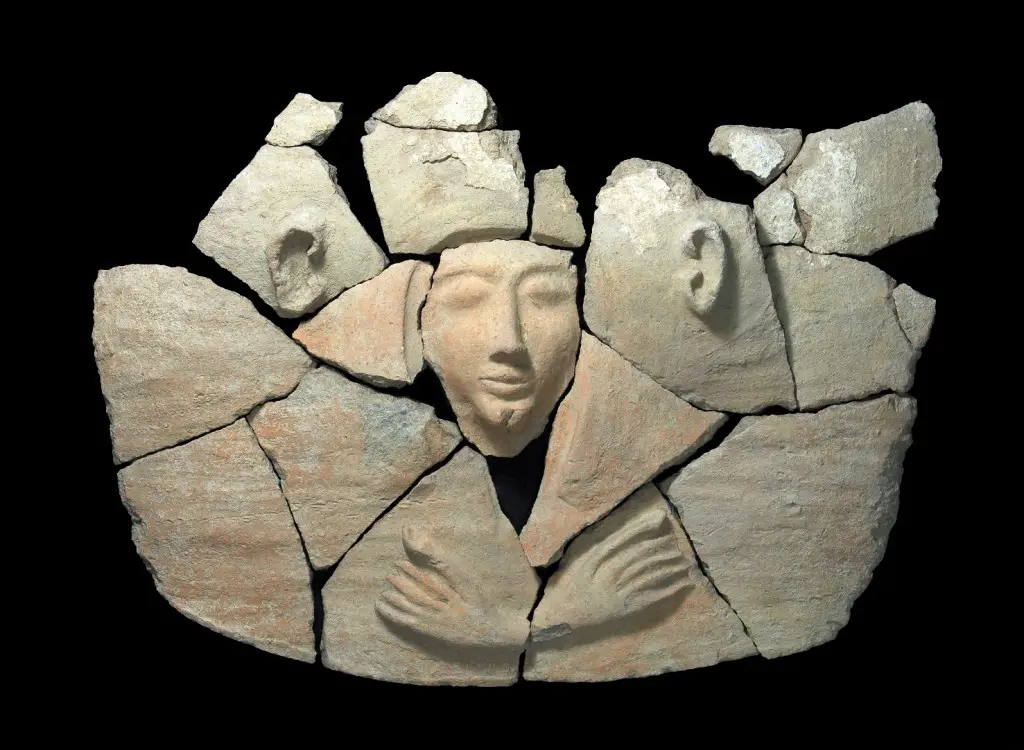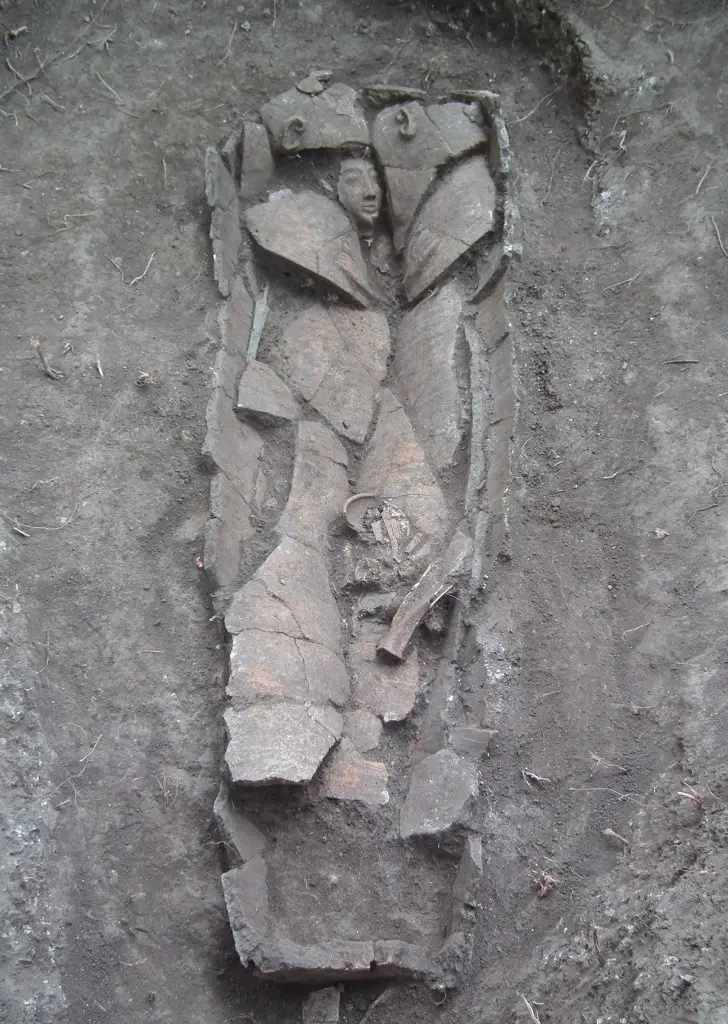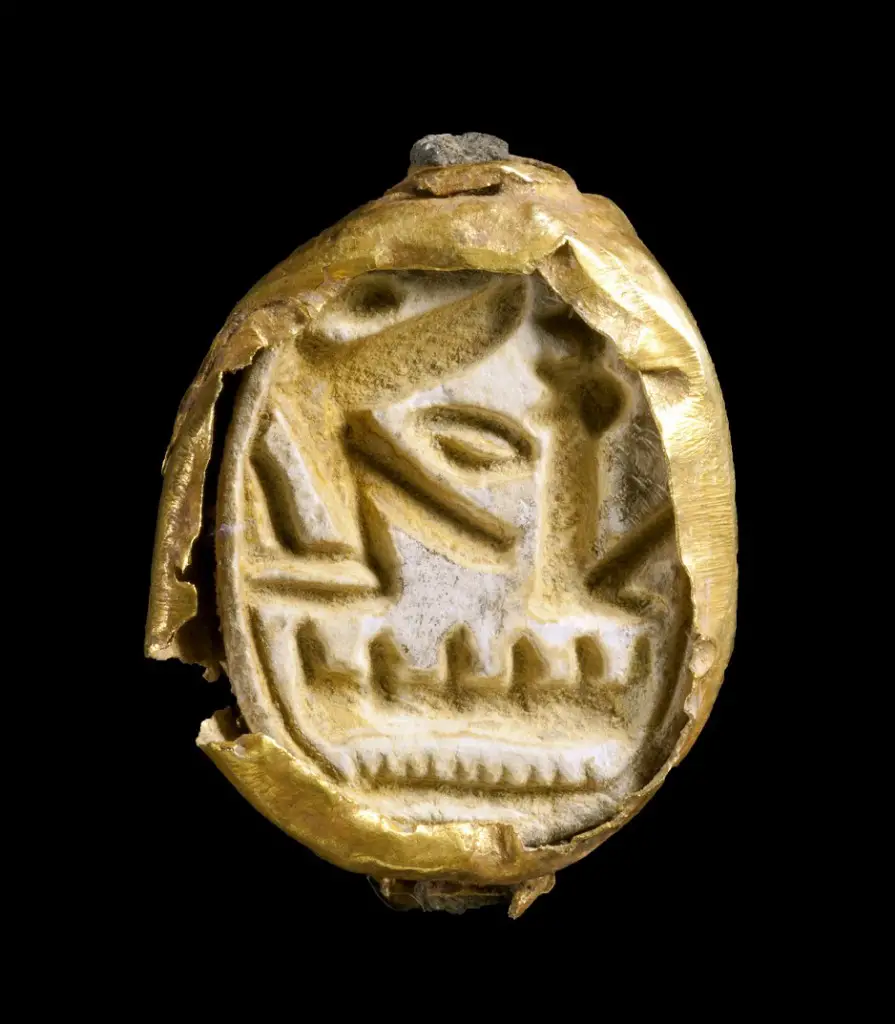A 3,300 year old coffin has been discovered by archaeologists containing the personal belongings of a wealthy Canaanite – Possibly an Official of the Egyptian Army
The rare artifacts were uncovered during excavations by the Israel Antiquities Authority near Tel Shadud, prior to the installation of a natural gas pipeline to Ramat Gavriel by the Israel Natural Gas Lines Company. Among the items discovered – a gold signet ring bearing the name of the Egyptian pharaoh Seti I
As part of a project by the Israel Natural Gas Lines Company (INGL) to construct a main pipeline that will convey natural gas to Ramat Gavriel, the Israel Antiquities Authority conducted a salvage excavation prior to the pipeline’s installation. During the course of the work, which was financed by the INGL, a fascinating and exceptional discovery was made.

Part of a burial site dating to the Late Bronze Age (thirteenth century BCE) was exposed in an excavation at the foot of Tel Shadud. According to the excavation directors, Dr. Edwin van den Brink, Dan Kirzner and Dr. Ron Be’eri of the Israel Antiquities Authority,
“During the excavation we discovered a unique and rare find: a cylindrical clay coffin with an anthropoidal lid (a cover fashioned in the image of a person) surrounded by a variety of pottery consisting mainly of storage vessels for food, tableware, cultic vessels and animal bones. As was the custom, it seems these were used as offerings for the gods, and were also meant to provide the dead with sustenance in the afterlife.”
The skeleton of an adult was found inside the clay coffin and next to it were buried pottery, a bronze dagger, bronze bowl and hammered pieces of bronze. “Since the vessels interred with the individual were produced locally”, the researchers say, “We assume the deceased was an official of Canaanite origin who was engaged in the service of the Egyptian government”.

Another possibility is that the coffin belonged to a wealthy individual who imitated Egyptian funerary customs. The researchers add that so far only several anthropoidal coffins have been uncovered in the country. The last ones discovered were found at Deir el-Balah some fifty years ago. According to the archaeologists, “An ordinary person could not afford the purchase of such a coffin. It is obvious the deceased was a member of the local elite”.
The graves of two men and two women who may have been members of his family were also located near the coffin. The discovery of the coffin at Tel Shadud is evidence of Egyptian control of the Jezreel Valley in the Late Bronze Age (thirteenth century BCE). During the period when the pharaohs governed the country, Egyptian culture greatly influenced the local Canaanite upper class. Signs of Egyptian influence are occasionally discovered in different regions and this time they were revealed at Tel Shadud and in the special tomb of the wealthy Canaanite.
A rare artifact that was found next to the skeleton is an Egyptian scarab seal, encased in gold and affixed to a ring. The scarab was used to seal documents and objects. The name of the crown of Pharaoh Seti I, who ruled ancient Egypt in the thirteenth century BCE, appears on the seal. Seti I was the father of Ramses II, identified by some scholars as the pharaoh mentioned in the biblical story of the Israelites’ exodus from Egypt. Already in the first year of his reign (1294 BCE) a revolt broke out against Seti I in the Bet Sheʽan Valley.
Seti conquered that region and established Egyptian rule in Canaan. Seti’s name on the seal symbolizes power and protection, or the strength of the god Ra – the Sun God – one of the most important deities in the Egyptian pantheon. The winged Uraeus (cobra), protector of the pharaoh’s name or of the sovereign himself, is clearly visible on the seal. The reference to the pharaoh Seti on the scarab found in the coffin aided the archaeologists in dating the time of the burial to the thirteenth century BCE – similar to the burials that were exposed at Deir el-Balah and Bet She‘an, which were Egyptian administrative centers.
A cemetery dating to the reign of Seti was previously discovered at Bet Sheʽan, the center of the Egyptian rule in the Land of Israel, and similar clay coffins were exposed. Evidence of an Egyptian presence was detected in archaeological surveys conducted in the Jezreel Valley in the past but the discovery of the impressive anthropoid at Tel Shadud surprised the archaeologists. Tel Shadud preserves the biblical name ‘Sarid’ and the mound is often referred to as Tel Sarid.

The tell is situated in the northern part of the Jezreel Valley, close to Kibbutz Sarid. The city is mentioned in the Bible in the context of the settlement of the Tribes of Israel. Sarid was included in the territory of the tribe of Zebulun and became a border city, as written in the Book of Joshua: “The third lot came up for the tribe of Zebulun, according to its families. And the territory of its inheritance reached as far as Sarid…” (Joshua 19:10). Tel Shadud is strategically and economically significant because of its location alongside important roads from the biblical period.
The Israel Antiquities Authority is currently looking into the possibility of sampling the DNA from inside the coffin to see if the deceased was originally a Canaanite or an Egyptian person who was buried in Canaan.
Header Image : The gold scarab. Photograph: Clara Amit, courtesy of the Israel Antiquities Authority.
Contributing Source : IAA






